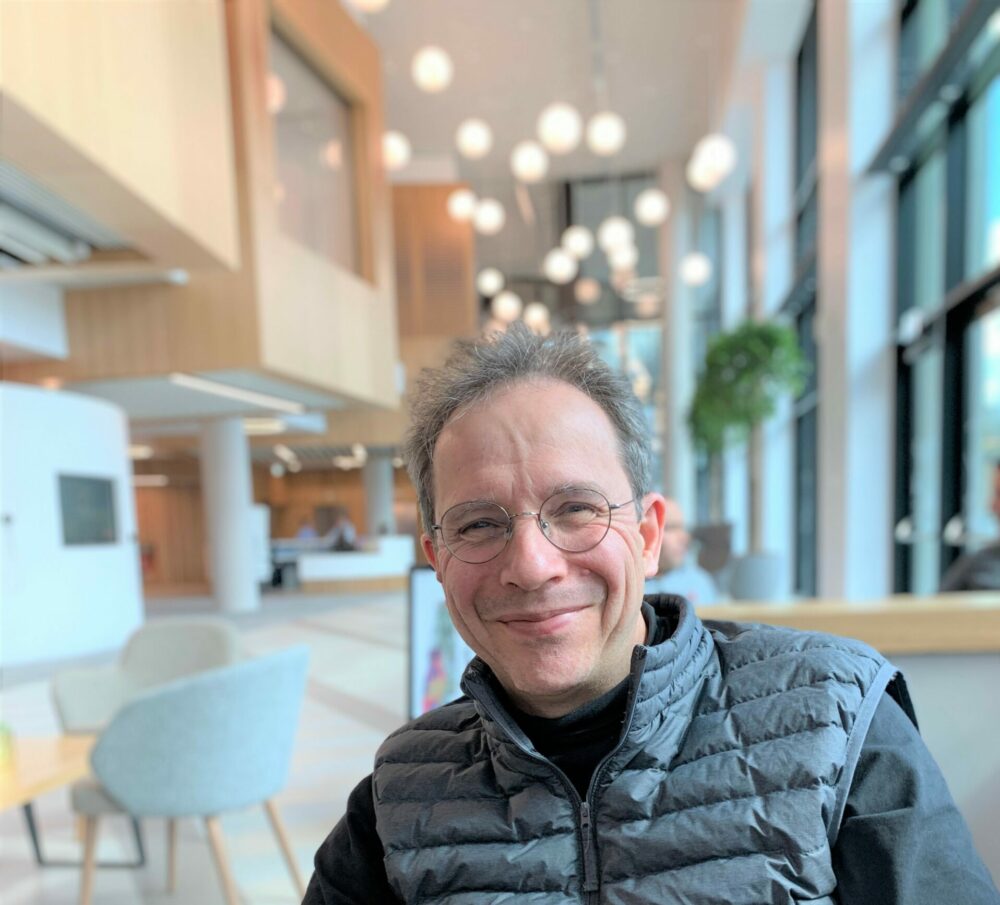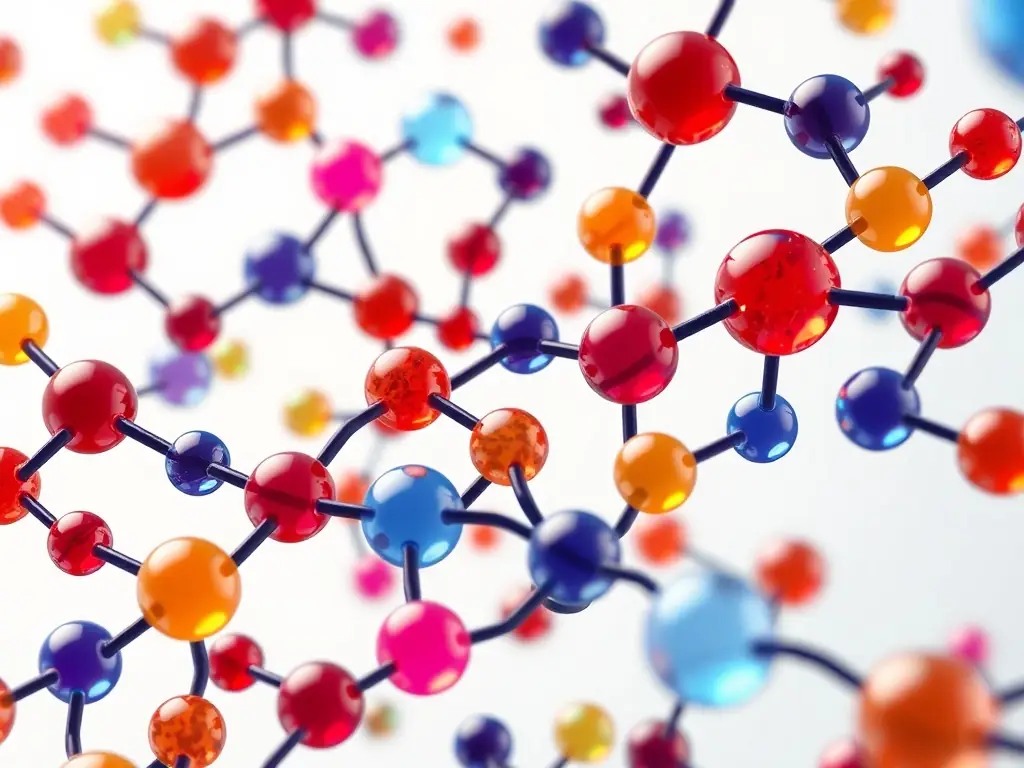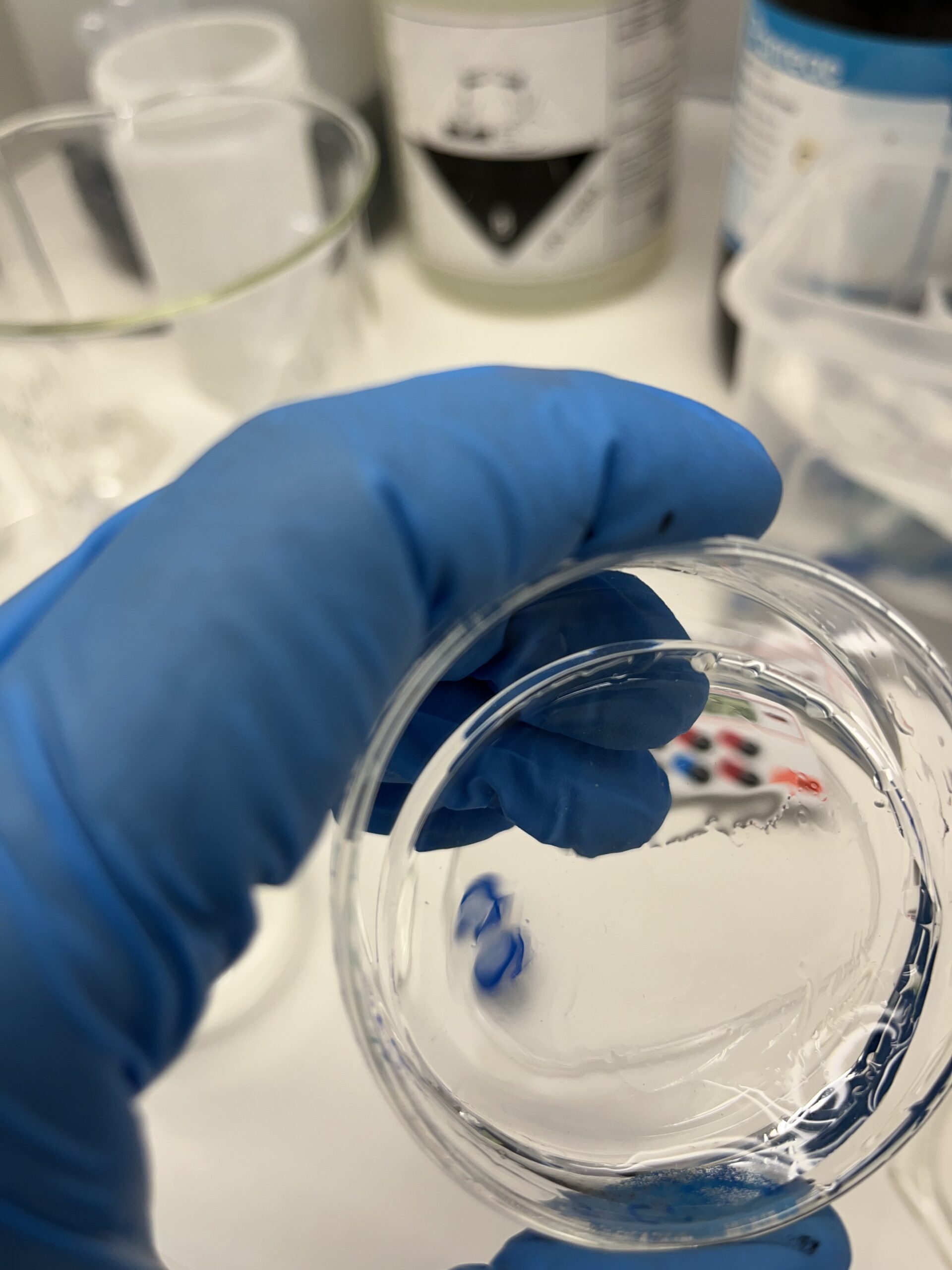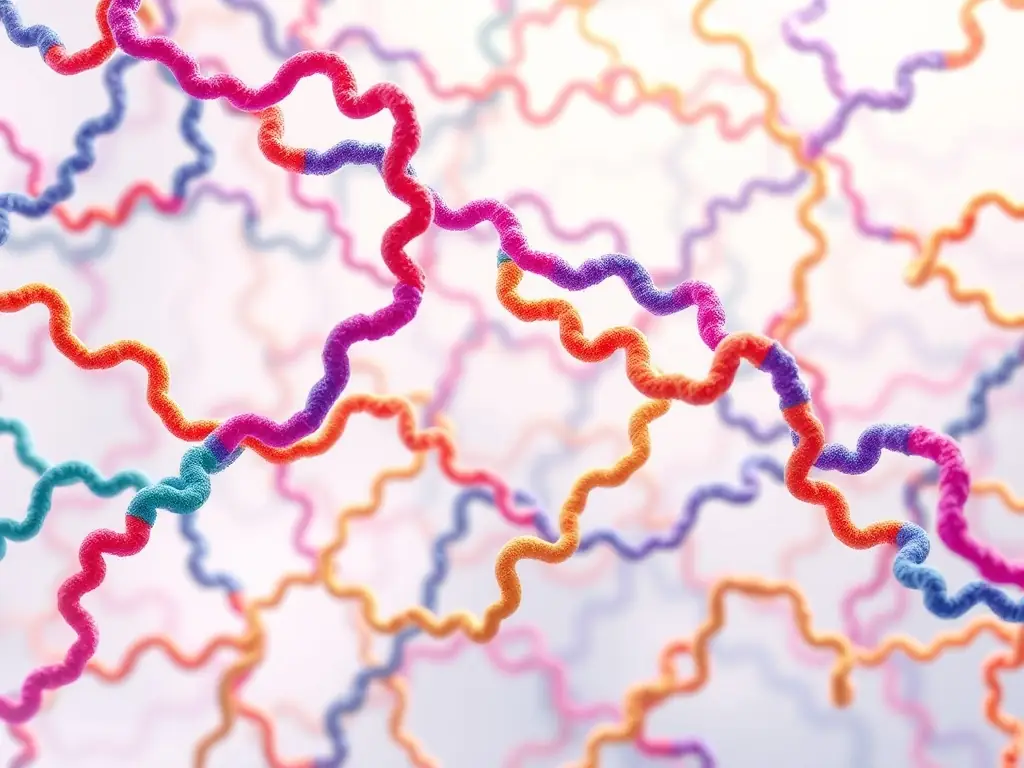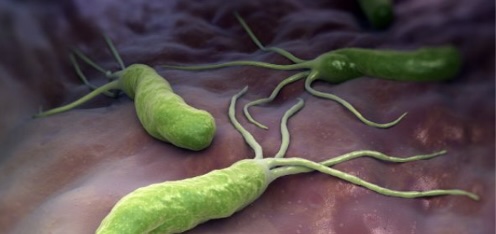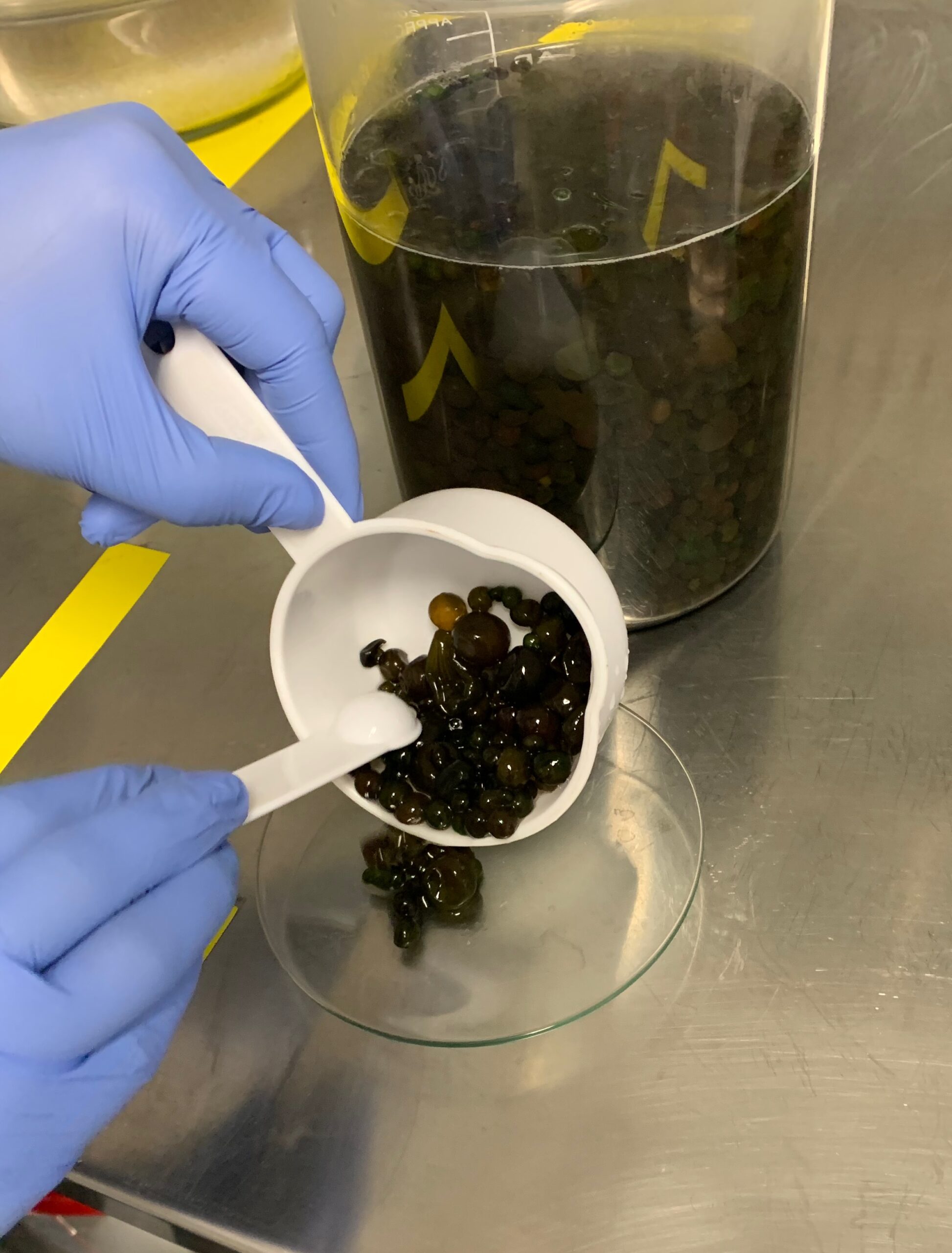
Francisco Goycoolea's Research
His mission is to inspire others while maintaining integrity and a commitment to continuous learning in the scientific community. His lab has published over 200 papers (167 research articles, 18 reviews, 27 book chapters).
Francisco M. Goycoolea is a dedicated scientific researcher and university academic with a PhD in Biopolymer Sciences. His work focuses on investigating how biopolymers (chitosans and other polysaccharides) influence biointerfaces and biological networks, aiming to uncover insights that lead to innovative solutions in health, food and biological sciences.
Francisco leads various research initiatives, mentoring upcoming scientists and fostering a collaborative environment.
Research Interests
- Biopolymers physical chemistry and characterisation
- Biomaterials
- Biophysics of cell networks and mucosas
- Nanotechnology in drug and gene delivery
- Food polysaccharides
- Biomicrofluidics
Biomicrofluidics
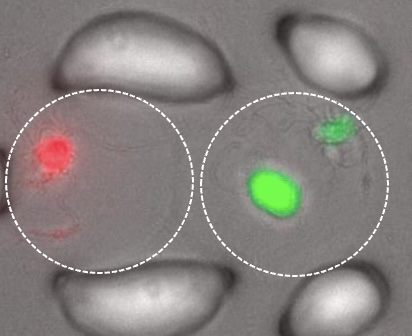
Microfluidics technology applied to bacterial cells phenotype profiling has enabled us to elucidate cell-to-cell communication (quorum sensing) using fluorsecent reporters. This is being the basis of ongoing studies to explore strategies to inhibit bacterial virulence with phytoichemicals and nanoparticles and elucidate the role of mucins in these phenomena.
Representative publications
An engineered E. coli community for studying quorum sensing.
SynBio. 1, 144-157 (2023) This research article documents the approach to design and construct the plasmids used to transform three E. coli strains as quorum sensing fluorescent protein reporters of the sensing, transmitting and regulation (enzymatic degradation) elements of the LuxI/LuxR quorum sensing system. Evidence of the functional performance of the three strains in planktonic condition is provided.
Biotechnologically produced chitosans with nonrandom acetylation patterns differ from conventional chitosans in properties and activities.
Nature Communications 13, 7125 (2022) This research article is the result of a collaboration by an international collaborative consortium in which chitosans obtained by enzymatic reacetylation with a non-random N-acetylation pattern showed, for the first time, broadly different material and biological properties (cytotoxicity, gene transfection, antimicrobial) than chemically produced polymers of equivalent degree of acetylation.
Low-molecular-weight dextran sulfate nanocapsules inhibit the adhesion of Helicobacter pylori to gastric cells.
ACS Applied Biomaterials, 2, 4777-4789 (2019). This study provided proof of concept of the development of nanocapsules stabilised by an electrostatic complex of lysozyme and dextran sulphate. The capsules were applied to treat fluorescently labelled H. pylori cells and subsequently incubate them with AGS stomach cells, a surrogate of stomach epihthelium monolayer. By FACS, it was possible to show the inhibition activity of the nanocapsules
Nano-encapsulated capsaicin changes migration behavior and morphology of madin Darby canine kidney cell monolayers.
PLoS ONE 12(11):e0187497 The study addressed the treatment of MDCK-C7 epithelial cell monloayers with capsaicin encapsulated in a chitosan-coated nanosystem and in its free form and uncovered a change of the cellular morphology as well as on the velocity and directness of collective migration compared to control cells. The relevance of the paper lies in the demonstration that small nanoparticles and compounds known to interferece with calcium and other ion channles, are able to influence drastically the phnetoype of epithelial cells as probed by digitial holographic microscopy. A quantitative analysis of the single-cell behaviour was applied to analyse the time-lapse digitnal holographic microscopy images.
An investigation of the interactions between an E. coli bacterial quorum sensing biosensor and chitosan-based nanocapsules
Colloids Surf. B: Biointerfaces.149, 358-368 (2017) This study provided proof of concept of a quantitative approach of the interaction of chitosan-based nanocapsules and E. coli bacteria by using experimental and in silico simulations. It proposed, for the first time, the existence of a "stoichiometry" between the number of capsules and bacteria as a novel concept to design therapies to deliver antibacterial compounds on a rational basis.
Ongoing Projects
AdvanceYeastPro
AdvanceYeastPro-Advanced and sustainable yeast-based novel food, grown in vegetable derived scaffolds for a high-structured and protein rich product.
AdvanceYeastProt aims to create an unprecedented low-emission, indulgent, highly structured protein and vitamin enriched yeast-based “whole-cut” food product, to answer consumers’ and market demands, while boosting the reduction of food loss and freshwater usage by promoting the recovery of vegetable retailers’
Funding agency: Innovate UK (01/10/2023-30/09/2025) Pro Ref 10076698
SNAPP
Sustainable Nutrition for Animal Protein Productivity
The aim is to develop next-generation of pig feeds tailored at reducing post-weaning morbidity and mortality of piglets, but also improving subsequent animal growth, productivity, and meat quality. Through the proposed project, we will improve sustainability, resilience and productivity in vegetable farming and pig productivity, thus creating additional opportunities for farmers and the farming sector, through diverting waste from landfill and help achieving net-zero carbon emission targets.
Funding agency: Innovate UK (01/04/2023-31/03/2025) Pro Ref 1005049.
CodeChi
Chitin, chitosan and chito-oligosaccharides and their interaction with proteins of the extracellular matrix and cellular signaling
Chitin and chitosans (C/CS) are among the most abundant and versatile polymers in nature, occurring as structural components in numerous types of extracellular matrices. The structural tenets underlying their immense range of different physicomechanical properties are currently unknown. Equally, C/CS biosynthesis, assembly and degradation as well as their interactions with cellular components and their involvement in the communication between organisms are poorly understood. Based on emerging new evidence, we strongly believe that the molecular fine structure of C/CS (e.g. degree of polymerization; the degree and pattern of acetylation), contributes to define the properties of C/CS-containing biological matrices and functional materials. In addition, C/CS-binding receptors of human, animal and plant immune systems trigger defense reactions upon perception of C/CS oligomers (COS) produced by the action of C/CS-degrading enzymes. Thus, we hypothesize that the fine-structure of C/CS and COS harbors a code, which we term “CodeChi”, that is “written”, “enacted” and “interpreted” by a large variety of C/CS-binding and C/CS-modifying proteins in organisms that produce these polymers, as well as C/CS-degrading enzymes and C/CS-binding receptors in environmental hosts that perceive C/CS-containing organisms. The Priority Programme 2416 aims to decrypt “CodeChi”, to understand the molecular and biophysical principles of C/CS functions in nature and to utilize this knowledge for the fabrication of functional materials. The coordination project accounts responsible for achieving the overall goals of the SPP2416 by ensuring effective collaboration between the different disciplines and providing the necessary infrastructure for a successful work. It will be the central interface for administration and coordination of the research consortium. The coordination project will establish and maintain multiple platforms for scientific exchange and networking activities, and pursue measures to ensure public and international visibility. It will particularly support young investigators in their early careers, apply instruments for equal opportunity, female and family-friendly promoting policies. Finally, the coordination projects will govern three service projects that provide expertise and capability in: 1) the synthesis and structural analysis of chemically defined chito-oligosaccharides; 2) production of specific chitins and chitosans and quantitative analysis of the degree of polymerization and fraction of acetylation; 3) determination of kinetic parameters for the binding of proteins to crystalline chitin nanofibers and chito-oligomers. The coordination office will be located at the Department of Chemistry-Biology, School of Natural Science and Technology, University of Siegen, and will support the coordinator in his work.
Funding agency: Deutsche Forschungsgemeinschaft (DFG) – Priority Programme SPP 2416, Project number 50092794198 (2023-2026). Mercator Fellow.
Completed Projects
Biopolymer assisted remediation of microplastics from fresh and saline water environments using an integrated technology of coagulation-ultrasonication/cavitation (MINUSMICRO)
This fellowship project, awarded to Dr. Devlina Pramanik and hosted jointly in my lab and in Prof. Paul Kay, aimed at remediating microplastics in the native and secondary pollutant laden forms using biopolymer assisted coagulation technique. The novelty in this research lied in synthesizing, characterizing and applying various forms of chitosan namely, ultrasonicated (Enhanced ortho-kinetic and hydrodynamic interactions between chitosan and microplastics are expected to enhance particle removal based on the size and surrounding salinity), electrospun (development of chitosan nanofibers in native, grafted and hydroalcoholic forms for intensifying microplastic coagulation especially for the purpose of bulk recovery and upcycling based on enhancing the bridging potential), cavitated (Development of cavitated chitosan nanofibers of arbitrary sizes and correlate it with the overall gelling strength and coagulation efficiency for removal of microplastics of varying shapes) and surface imprinting (Development of a ‘double imprinted form’ of chitosan particle suspension specially meant to coagulate microplastics by dually interacting with the bound ionic heavy metals and polyaromatics, due to its high binding capacity, high selectivity, and fast mass transfer). The primary research objectives included (i) development and characterization of various functionalized forms of chitosan (ii) generate a two-way evaluation system for coagulation potential and (iii) develop suitable collaborations with waste management organizations and perform real-time application on microplastic recovery and sludge reuse (for construction materials). The project enabled to identify activated biopolymers as sustainable, eco-friendly and effective alternative to synthetic and harmful coagulants of current wide use.
Funding agency: European Union (Horizon2020) – MSCA Fellowship for Dr. Devlina Das. Ref. 897736 (11/02/2020-11/01/2022)
Enhancing the bacterial anti-quorum effect by using chitosan based nanoencapsulation of 1,3-di-m- tolylurea and fluoride against dental caries pathogen Streptococcus mutans.
This project, consisting of a postdoctoral fellowship awarded to Dr. Gurmeet Kaur, hosted jointly in my lab and in Prof. Deirdre Devine of the School of Dentistry of University of Leeds, aimed at developing innovative antibiofilm/antiplaque strategies against dental caries.
Streptococcus mutans, is one of the early colonizers among the ~700 bacterial species, to exist in the human oral cavity and cause dental caries. Quorum Sensing (QS), a cell-density dependent communication process in which a bacteria respond to the inter/intra-species signals and as a result express various virulence genes in synchrony.
The work entailed to encapsulate 1,3-di-m-tolylurea (DMTU) in chitosan-based nanocapsules to enhance its activity and design a successful delivery system to prevent biofilm formation of inhibition of S.mutans on the growth of late colonizer P.gingivalis in co-culture studies, as a firdt assessment of its potential clinical use as an alternative to the use of antibiotics.
Funding agency: International Newton Fellowship /Academy of Medical Sciences (U.K.). Ref. NIF\R1\180856 (03/01/2019-02/28/2021)
NanoBioEngineering of BioInspired BioPolymers (Nano3Bio)
The Nano3Bio project convened a consortium of world renowned experts from 8 EU universities, 1 large company, and 14 SME, to develop biotechnological production systems for nanoformulated chitosans. Chitosans, chitin-derived polysaccharides varying in their degree of polymerisation (DP), degree of acetylation (DA), and pattern of acetylation (PA), are among the most versatile and most promising biopolymers, with excellent physico-chemical and material properties, and a wide range of biological functionalities, but their economic potential is far from being exploited due to i) problems with reproducibility of biological activities as today’s chitosans are rather poorly defined mixtures, and ii) the threat of allergen contamination from their typical animal origin. The Nano3Bio project contributed to overcome these hurdles to market entry and penetration by producing in vitro and in vivo defined oligo- and polymers with controlled, tailor-made DP, DA, and PA. Genes for chitin synthases, chitin deacetylases, and transglycosylating chitinases/chitosanases mined from different (meta)genomic sources and heterologously expressed, the recombinant enzymes characterized and optimized by protein engineering through rational design and molecular evolution, e.g. targeting engineered glycosynthases. These enzymes and genes were used for in vitro and in vivo biosynthesis in microbial and microalgal systems, focusing on bacteria and diatoms. The bioinspired chitosans were formulated into biomineralised hydrogels, nanoparticles and nanofibres to impart novel properties, including by surface nano-imprinting, and were bench-marked against their conventional counterparts in a variety of cell based assays and routine industrial tests for e.g. cosmetics and pharma markets. The process was accompanied by comprehensive life cycle assessments including thorough legal landscaping, and by dissemination activities targeted to the scientific community and the general public.
Webseite: http://www.bbeu.org/nano3bio
Funding agency: European Union – FP7. Ref 613931 (10/01/2013-09/30/2017)
Optimization and Demonstration of a Sustainable Bioprocess for Extraction of Value-Added Food Supplements and Ingredients from Crustacean Waste Resources (TAMFI).
The principal objective of the project was to evaluate the performance of chitins, chitosans, asthaxantin and calcium lactate from three Canadian shell by-product waste types (snow crab, lobster and shrimp) and two UK sources (brown crab and langoustine) as high-value ingredients for functional foods and supplements.
The collaborative project convened expertise of three SMEs: Terravedae in Prince Edward Island (Canada) specialising in waste processing, Pennotec in Wales (UK) specialising in industrial biotechnology, and Vitrition in Yorkshire (UK) specialising in supplement manufacture. The industrial expertise was supplemented by academic expertise from the University of Leeds in chitin/chitosan analysis, supercritical extraction of asthaxanthin and Nutrition.
This project addressed a major technical challenge to develop food grade, efficient and green processes for hygienic conversion of shell waste, which is classified as animal waste and prone to bacterial contamination, into high-value food ingredients or supplements, without the application of polluting chemicals or energy intensive processing.
Funding agency: Innovate UK (UK-Canada, 01/11/2019-31/01/2022) – BBSRC/Innovate UK/Canada. Ref. TS/T007362/1
UK-China Agritech Challenge-CITRUSAFE
The project addressed China’s development priorities to eliminate waste and improve food safety. The project exploited complementary Chinese and UK research and industrial expertise to valorise waste from large scale (>10 million tons of waste) Chinese mandarin canning manufacturing for food safety applications. Efficient green technologies were optimised to extract and refine food-grade hydrocolloids and citrus bioactives from both solid and liquid waste streams.
The focus was on improving extraction efficiencies and solubility of the compounds to ensure compatibility with foods and packaging matrices. The exploitable outputs were well-defined biomaterials with downstream processing applications in two manufacturing sectors: food additives and food packaging.
Food and packaging prototypes were developed and selected according to optimal antimicrobial and antioxidant properties against key spoilage pathogens in high-risk foods (e.g. meat and fish products) and consumer acceptability.
Funder: BBSRC, Innovate UK, Newton Fund, Chinese Ministry of Science and Technology. UKRI (02/01/2019-07/30/2021) – Ref. BB/S020950/1
Biopolymer-Based Nanoparticulate ‘Smart’ Drug Delivery Systems and their Biopharmaceutical Application by Oral Administration. (BIONANOSMART)
This initiative aimed to gain both fundamental insight and applied knowledge on novel polysaccharide-based nanoparticles to be utilized as ‘smart’ advanced delivery systems of therapeutic biomacromolecules for oral administration. To this end, nanoparticles were obtained from chitosan and other polyanionic polysaccharides of biomedical use (alginate and hyaluronic acid), crosslinked with a natural non-toxic biocompatible agent. Sensitivity to changes in temperature and pH were conferred by modifying the surface charge (zeta potential) by modifying the local hydrophilic/hydrophobic balance the nanoparticle surface. Phase transitions in these systems was investigated by means of biophysical techniques including dynamic light scattering and SAXS (small-angle X-ray scattering). The in vitro release profile was evaluated as a function of the presence of the external stimuli (temperature, pH and concentration of specific molecules). The performance was evaluated for selected prototypes after oral administration of insulin-loaded nanoparticles in a heatlhy rat model.
Funding agency: European Union (Programme Marie Curie – International Incoming Fellowships). FP7-PEOPLE-2007-4-2-IIF. (01/10/2008 – 30/09/2010)
IRTG 1549 – Molecular and Cellular Glyco-Sciences (MCGS). Understanding Structure/Function Relationships of Carbohydrate/Protein-Interactions (MCGS)
Molecular and biochemical aspects of carbohydrate/protein-interactions in the cellular context are being characterized in detail by our Indo-German International Research Training Group on MOLECULAR AND CELLULAR GLYCO-SCIENCES (MCGS). The focus was on structure/function-relationships, i.e. on elucidating the structural requirements responsible for the interaction of glycans with their target proteins. The German groups focused on the analytical and functional aspects of the carbohydrate moieties (e.g. identifying potential protein binding domains of glycans), while the Indian groups mainly dealt with the protein aspects (e.g. identifying potential carbohydrate binding sites of specific agglutinins). Each doctoral project was jointly investigated by an Indian and a German group. This created a basic understanding of structure/function-relationships at a molecular level and, thus, will allow us to eventually develop, validate, and apply the tools needed to exploit the biotechnological potential of glyco-structures for novel knowledge-driven applications. MCGS convened a group of internationally recognized research teams from biology, chemistry, and medicine, that initiated an interdisciplinary and intercultural approach for the doctoral candidates’ training and education. MCGS was a training programme that nurtured ca. 40 doctoral candidates with different degrees such as Bachelor, Master, Diplom, or federal exam, in different disciplines of natural and life sciences, including applied sciences such as biotechnology, pharmacy, medicine, pharmacology, agriculture, veterinary, food, and material sciences, from a competitive pool of international applicants. It also employed postdoctoral fellows. The study programm offered basic Lecture cum Seminar on glyco-sciences, and three-weeks Summer and Winter Schools, individual Technical Workshops and a range of Enabling Skills Workshops. It also included bi-annual MCGS Network Symposia. The programme was advised by ca. 20 scientists, with half of the candidates and scientists from Germany, half from India. A total of four PhD students were directly funded by this programme and trained in my lab (JP Fuenzalida, B Menchicchi, M Kaiser and B Santos-Carballal).
Website of the project: http://www.uni-muenster.de/MCGS/
Funding agency: Deutsche Forschungsgemeinschaft (DFG). Call GRK. Project number GRK 1549-77760487 (10/03/2009 – 31/03/2014)
Functional electrospun nanostructures and microstructures for food and bioengineering applications (FENAMI)
The objectives of this collaborative international project were to generate the scientific and technological basis to: (i) develop new nano-microcarrier systems for bioactive compounds using electrospun nano-microstructures for their immobilization, (ii) develop new nano-microdelivery systems utilizing enzyme functionality and molecular imprinted polymers for controlled delivery/release of bioactives, (iii) study the structural and functional properties of nano-microstructures (NMS) as novel components of food and bioengineered products, (iv) evaluate their bioavailability and degradation/digestion in-vitro and in-vivo.
The overall aim was to create new functional systems that have a potential usage in foods/healthy foods, as nutritional supplements, as pharmaceutical products and for a range of other bioengineering applications. The project’s ambition was also to contribute to research training in research institutes and industrial companies as well as education of industrial employees. The obtained knowledge contributed to strengthen the Danish industry’s potential to emerging nano-microtechnologies and technologies of bioactives.
Funding agency: Danish Agency for Science, Technology and Innovation. 01/05/2011 – 31/10/2015.
- Technical University of Denmark (lead)
- University of Münster (Project partner)
- Lund University (Project partner)
- University of Copenhagen (Project partner)
- Fertin Pharma AS (Project partner)
Collaborations
Doctoral Students
Alumni
Thesis project: On the design and characterization of chitosan-DNA nanostructures. Name of Student: Ayesha Sajid. School of Food Science and Nutrition, University of Leeds, U.K. Date of defense: June 2024. Starting date: September 2019
Sajid A. et al., 2023 Polymers 15, 2115
Thesis project: Developing mucus-biomimetic models to study mucus-bacteria interactions. Name of Student: Mengqi Wu. School of Food Science and Nutrition, University of Leeds, U.K. Date of defense: May 2024. Starting date: September 2019
Berberolli S. et al., 2024 Curr. Opin. Gastroenterol., 40, 1
Thesis Title: Liposomal Systems for Delivery of an Antibacterial Peptide to Porphyromonas gingivalis. Name of Student: Jinyang Han. School of Food Science and Nutrition, University of Leeds, U.K. Starting date: Jun 2018. Date of defense: Jun 2023
Han J. et al., 2024 Heliyon, 10, e34554
Thesis Title: Chitosan-based paper biosensors for detection of fungal toxins
Name of Student: Vicente Antonio Mirón Merida. School of Food Science and Nutrition, University of Leeds, U.K. Starting date: Mar 2017. Date of defense: Jun 2021
Mirón-Mérida V.A. et al., 2021 Sens. Bio-Sensing Res., 32 100421
Mirón-Mérida V.A. et al., 2021 Biosensors 2021, 11, 18.
Mirón-Mérida V.A. et al., 2021 Analytica Chimica Acta. 1160, 338395.
Mirón-Mérida V.A. et al., 2020 Sens. Bio-Sensing Res., 29,100339.
Mirón Mérida V.A. et al., 2020 ChemRxiv Preprint
Thesis Title: Nanobiotechnological platforms for bacterial quorum quenching. Name of Student: Celina Vila Sanjurjo. Faculty of Pharmacy Universidad de Santiago de Compostela, Spain. Starting date: May 2010. Date of defense: Jun 2021.
Qin X. et al., 2020 Pharmaceuticals, 13, 263.
Vila-Sanjurjo C. et al., 2020 J. Colloid Interface Sci. 578, 171
Vila-Sanjurjo C. et al., 2019 J. Colloid. Interface Sci., 556: 592
Vila-Sanjurjo C. et al., 2016 BioRxiv Preprint
Fuenzalida J.P. et al., 2014 Biomacromolecules, 15, 2532
Thesis Title: Novel antibiotic-free carbohydrate-based approaches to disrupt pathogenic bacterial virulence. Name of Student: Thanh Hao Nguyen. Faculty of Biology, University of Münster, Germany. Starting date: Oct 2015. Date of defense: Nov 2019.
Nguyen H.T. et al., 2022 Fitoterapia, 105132
Nguyen H.T. et al., 2022 Colloids and Surfaces B: Biointerfaces, 211
Hao N.T. & Goycoolea, 2017 Molecules. 22, 1975
Thesis Title: Understanding the principles of bacterial communication, particle formation, and the interactions between them. Name of Student: Christoph Engwer. Faculty of Biology, University of Münster, Germany. Starting date: May 2015. Date of defense: Apr 2019.
Moreno J.A.S. et al., 2018 Carbohydr. Polym. 190, 240
Engwer C. et al., 2017 ChemRxiv Preprint.
Mendes A.C. et al., 2016 Pure Appl. Chem. 88, 905
Vila-Sanjurjo C. et al., 2016 BioRxiv Preprint
Thesis Title: Structure-function relationships in chitosan-based nanostructured materials and their biological activity in mammalian cells. Name of Student: Stefan Hoffmann. Faculty of Biology, University of Münster, Germany. Starting date: May 2015 Date of defense: Nov 2018
Real D.A. et al., 2021 Journal of Molecular Liquids, 321, 11473
von Palubitzki L. et al., 2020 Scientific Reports 10, 22443
Real D. et al., 2018 PLoS ONE 13(12): e0207625.
Hoffmann S. et al., 2018 Nanomaterials, 8, 846.
Hoffmann S. et al., 2016 Pure Appl. Chem. 88: 891
Fuenzalida J.P. et al., 2014 Biomacromolecules, 15, 2532
Thesis Title: Development of nanostructured non-viral systems for systemic delivery based on biopolymers for gene therapy targeted to cancer cells. Name of Student: Tamara Mengoni. Faculty of Biology, University of Münster, Germany. Starting date: Oct 2014 Date of defense: Aug 2018
Sreekumar S. et al., 2022 Nat Commun 13, 7125
Wattjes J. et al., 2021 ChemRxiv Preprint
Gottesmann M. et al., 2020 Appl. Microbiol. Biotechnol. 104, 5943
Mengoni T. et al., 2017 Pharmaceutics, 9, 56.
Thesis Title: Bioactivity of natural compounds from traditional African medicine plants and their nanoencapsulation. Name of Student: Eric Omwenga. Faculty of Biology, University of Münster, Germany. Starting date: April 2014. Date of defense: April 2017
Omwenga E.O. et al., 2018 Colloid Surf B: Biointerfaces. 164, 125
Omwenga E.O. et al., 2017 PLoS ONE 12(11): e0185722.
Omwenga E.O. et al., 2015 J. Ethnopharmacol. 176, 508
Thesis Title: Natural and bioinspired compounds with anti-quorum sensing activity and their nanoencapsulation. Name of Student: Xiaofei Qin. Faculty of Biology, University of Münster, Germany. Starting date: Sep 2012. Date of defense: Dec 2016
Qin X. et al., 2020 Pharmaceuticals, 13, 263.
Qin X. et al., 2020 Bioorg. Chem. 98, 103698.
Qin X. et al., 2018 Biomolecules, 8, 87.
Sarkar A. et al., 2018 Food Hydrocolloids, 84, 282
Sarshar S. et al., 2018 Fitoterapia. 127, 237
Qin X. et al., 2018 Colloid Surf B: Biointerfaces. 169: 453
Sarshar S. et al., 2017 Phytomedicine,15, 1
Qin X. et al., 2017 Colloids Surf. B: Biointerfaces.149, 358
Vila-Sanjurjo C. et a. 2016 BioRxiv Preprint.
Thesis Title: Capsaicin-based nanoformulations to overcome epithelial barriers for advanced drug delivery. (summa cum laude) Name of Student: Mathias Kaiser. Faculty of Biology, University of Münster, Germany. Starting date: Oct 2012. Date of defense: Dec 2015
Kaiser M. et al., 2019 Int. J. Molec. Sci. 20, 122
Mengoni T. et al., 2017 Pharmaceutics, 9, 56
Kaiser M. et al., 2017 PLoS ONE 12(11): e0187497
Kaiser M. et al., 2017 In: Fruit and Vegetable Phytochemicals: Chemistry and Human Health. Yahia E.H. Wiley Blackwell.
Datta D. et al., 2016 Arch Biochem Biophys. 609, 59
Kaiser M. et al., 2016 J Pharm Sci. 105, 630
Pohl L. et al., 2016 In: Proc. SPIE 9713, Three-Dimensional and Multidimensional Microscopy: Image Acquisition and Processing XXIII, 97130D
Kaiser M. et al., 2016 In: Gums and Stabilizers for the Food Industry 18.
Kaiser M. et al, 2015 PLoS ONE 10(10): e0141017
Kaiser M. et al., 2015 Scientific Reports. 5, 10048
Kaiser M. & Goycoolea F.M. (2014) In: Capsaicin: Food Sources, Medical Uses and Health Implications. Nova Science Publishers, Inc. Hauppauge, NY. Pp. 53-73.
Thesis Title: Chitosan-based non-viral RNA delivery vectors. Name of Student: Beatriz Santos Carballal. Faculty of Biology, University of Münster, Germany. Date of defense: Oct 2015. Starting date: Oct 2012
Santos-Carballal B. et al., 2018 Polymers 10, 444
Mengoni T. et al., 2017 Pharmaceutics, 9, 56
Kolonko A.K. et al., 2016 JSM Genet Genomics 3, 1016
Fernández-Fernández E. et al., 2016 International J. Pharm. 502, 1
Santos-Carballal B. et al., 2016 J. Fluoresc. 26, 37
Santos-Carballal B. et al., 2015 Scientific Reports. 5:13567
Thesis Title: Polysaccharide-Proteins Nanocomplexes of Biological Relevance. Name of Student: Juan Pablo Fuenzalida Werner Faculty of Biology, University of Münster, Germany Starting date: Apr 2011. Date of defense: Jan 2015
Fuenzalida JP et al., 2019 BioRvix Preprint
Fuenzalida J.P. et al., 2016 Food Hydrocolloids. 53, 239
Fuenzalida J.P. & Goycoolea F.M. 2015 Curr Protein Pept Sci, 16, 89
Menchicchi B. et al., 2014 Biomacromolecules, 15, 3550
Fuenzalida J.P. et al., 2014 J Phys Chem B 118, 9782
Fuenzalida J.P. et al., 2014 Biomacromolecules, 15, 2532
Thesis Title: Polysaccharide, Helicobacter pylori and mucin: Their interactions and proof of concept of an antiadhesive nanoformulation. Name of Student: Bianca Menchicchi. Faculty of Biology, University of Münster, Germany. Date of defense: Jan 2015. Starting date: Apr 2011
Menchicchi B. et al., 2019 ACS Applied Biomaterials, 2: 4777
Menchicchi B. et al., 2017 Macromol Biosci,17,1600534
Menchicchi B. et al., 2015 Biomacromolecules. 16, 924
Menchicchi B. et al., 2015 Curr. Pharm. Design. 21(33): 4888
Menchicchi B. et al., 2014 Biomacromolecules, 15, 3550
Marcial G. et al., 2013 Int. J. Biol. Macromol. 62, 217
Goycoolea F.M. et al., 2012 Colloid Polym Sci, 290, 1423
Patent Inventors: Menchicchi B., Hensel A., Goycoolea F.M. Emulsiones coloidales y su uso Nr. MX/a/2015/00691 Country of priority: México. Date of priority: 02 June 2015
Ongoing
Thesis project: Nano and microstructured materials for delivery of fish bioactive peptides.
Name of Student: Yoni Atma. School of Food Science and Nutrition, University of Leeds, U.K. Expected date: Oct 2025. Starting date: Oct 2021
Atma et al. 2025 Food Hydrocoll. 160, 110789
Atma et al. 2024 Food Funct.,15, 3959
Thesis project: Aquafaba nanoparticles for delivery of bioactives. Name of Student: Selvi Secil Sahin. School of Food Science and Nutrition, University of Leeds, U.K. Expected date: Apr 2025. Starting date: Feb 2022
Sahin S.S. et al., 2024 Food Hydrocolloids, 150, 109728
Thesis project: Deconstruction of the complexity of the gut. Name of Student: Serena Berberolli. School of Food Science and Nutrition, University of Leeds, U.K. Expected date: Oct 2025. Starting date: Apr 2022
Berberolli S. et al., 2024 Curr. Opin. Gastroenterol., 40, 1
Berberolli S. et al., 2023 Int J Biol Macromol. 240:124464
